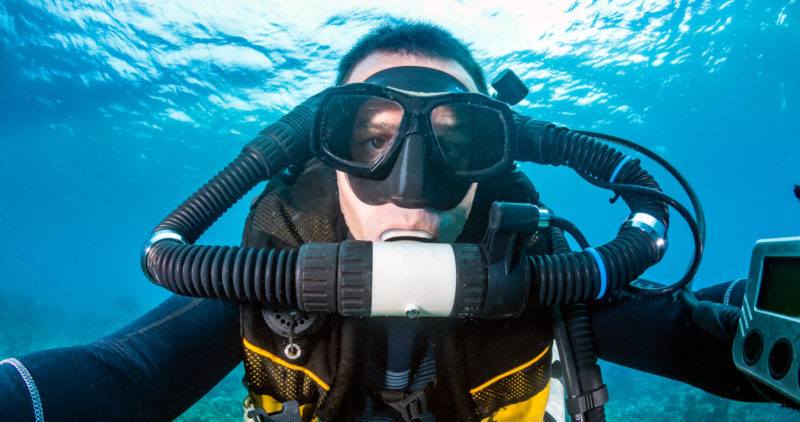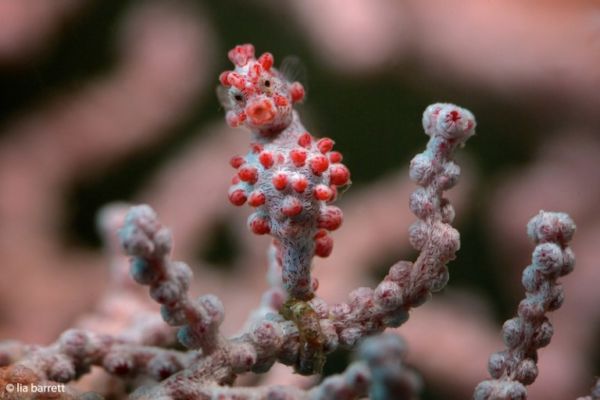If you’ve been thinking about getting into technical diving, you’ve probably looked at open circuit options like twinsets and sidemount configurations, as well as closed-circuit rebreather (CCR) diving. With so many choices it’s hard to know which way to best begin technical diving. Should you start with open circuit or rebreather? Here we’ll take a look at some of the key differences between the two.
Let’s first clarify the terminology: open circuit means nothing more than traditional scuba, where a tank delivers the gas and you inhale via a regulator. Your outward breath exhales the into the surrounding water, creating bubbles. It’s a fairly simple system. Closed circuit diving (CCR) means recycling some or all of your gas and re-breathing it, hence the name “rebreather.” There are no bubbles with this system. While simple in principle, the actual equipment setup tends to be more complicated when it comes to CCR diving.
Easier transition
Divers typically learn to dive on single tank open-circuit scuba. Therefore, one argument for starting to tech dive in open-circuit configurations is to create an easier transition to decompression diving and mixed gases. New tech divers can change single tanks to doubles and add stage/deco tanks, but the principal components of equipment — cylinders, buoyancy compensators and regulators — remain the same. With that in mind, student tech divers may find it easier to concentrate on learning new protocols and diving techniques.
Where will diving take you?
Another consideration is where you see your diving in five years’ time. Some tech students are simply curious about what lies beyond no-stop limits and are looking to discover ‘the dark side’ step by step. Others have a clear goal in mind — perhaps expedition diving, wreck exploration or mapping caves. These students already know they will be looking for greater depths, longer dives — and a lot of helium for their trimix. If you fall into the latter category, starting your tech diving journey on CCR might be a better option.
Added complexity

While the idea of recycling your gas supply seems beautifully simple, using an actual rebreather is more complex. For starters, there are two tanks involved. The first one contains oxygen to replenish the oxygen you have metabolized on the dive, and the second contains diluent to ensure you can keep oxygen partial pressures at a safe level, as well as being able to inflate your counter-lungs enough to take a full breath. Another key component is the CO2 scrubber, which removes carbon dioxide from the diver’s exhaled breath via a chemical reaction.
Consequently, setting up your rebreather takes longer than setting up a single tank. The same is true for cleaning equipment post-dive, although, with practice, divers develop a routine and become more efficient.
This added complexity does extend to the dive itself. While electronic CCRs do a lot of work for the diver, manual CCRs require the diver to be more active during the dive. Both types require divers to become very familiar and highly practiced when it comes to dealing with emergencies. Arguably, this also applies to open-circuit diving, but closed-circuit diving beyond the initial certification level does pose a higher degree of complexity.
Extended time underwater
One of the biggest benefits of rebreather diving is additional time underwater. On open circuit, tech divers tightly calculate their gas. One of their main concerns is whether or not they have something to breathe. On closed-circuit systems, however, the concern changes to ‘am I breathing something safe?’ Rebreather divers learn to check that they are maintaining a safe partial pressure of oxygen at all times to avoid hypoxia as well as oxygen toxicity.
With that in mind, the scrubber duration becomes a major limiting factor. This will vary from manufacturer to manufacturer and depend on scrubber size and design, but three or more hours is not unusual.
Marine life encounters

Diving without bubbles means diving almost silently and simply fitting better into the underwater world. Fish are calmer and tend to get closer to the diver to inspect this strange creature more closely. This is amazing for underwater photography and videography, and it can actually be a bit unnerving to new CCR divers. Divers may also find that their marine life encounters become longer as they are not standing out in the underwater environment as much as open-circuit divers do.
What’s your budget?
Diving is not a cheap hobby, nor should it be. It requires specialized life-support equipment that needs to be well maintained and often involves reasonably complex logistics. Technical diving takes all of that up a notch as divers add redundant equipment, some of which needs to be oxygen-clean, and may also look to dive specific, more expensive gases. Longer tech dives also mean that mixed boats with recreational and technical divers don’t always work well, so you may require a separate boat.
Once you exceed certain depths, you’ll need helium to dive safely and avoid issues such as gas density, narcosis, and oxygen toxicity. In most parts of the world, helium is expensive — and this is where the ability to recycle your gas may help you save money if you are diving closed circuit.
On the other side of this argument is the cost of getting started. Just like recreational training, you’ll learn both open-circuit and closed-circuit technical diving in stages, meaning you’ll need several courses to reach your goals. Then there is the cost of the rebreather itself. Many shops will offer rental units to students, but if you’re planning on sticking with CCR diving, investing in a unit of your own will become inevitable.
Having the ability to recycle your gas, however, will go some way toward offsetting the cost of helium along the way.
So, what should you do?
For many people the answer to that question is a bit of both. Laying open-circuit tech diving foundations, understanding decompression dive planning and gas calculations, and running dives will help a diver’s transition into CCR diving.
In addition, you must back up any CCR dive with a bailout plan, which you’ll calculate using largely the same principles open-circuit tech divers would apply to their contingency planning.
There is no one-size-fits-all answer here but consider how much time and budget you can dedicate to technical diving. How sure you are that this is the way your diving will go will help you decide whether to start with open-circuit training or jump straight into a CCR. And, if you can’t decide, there’s nothing wrong with doing both.

